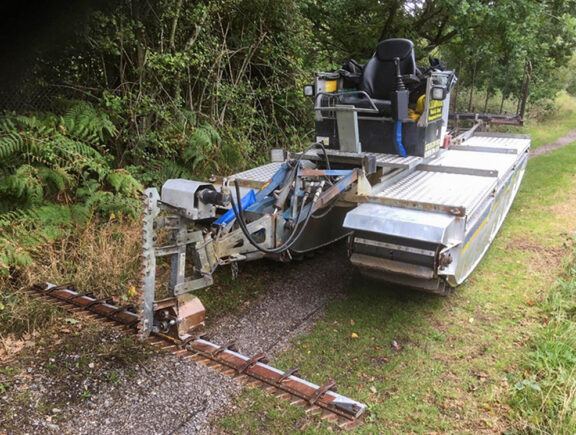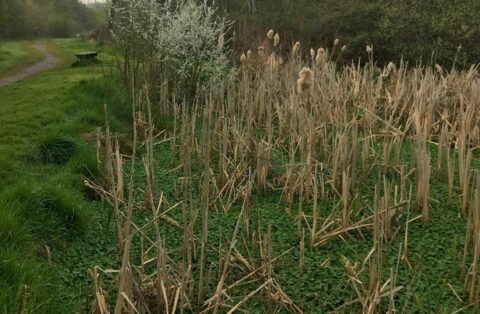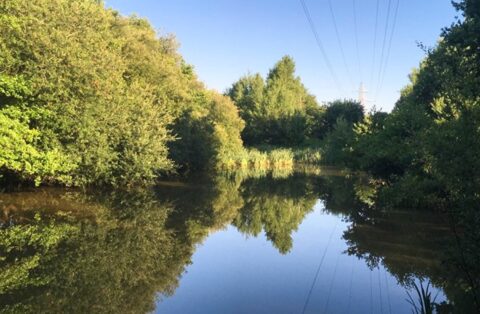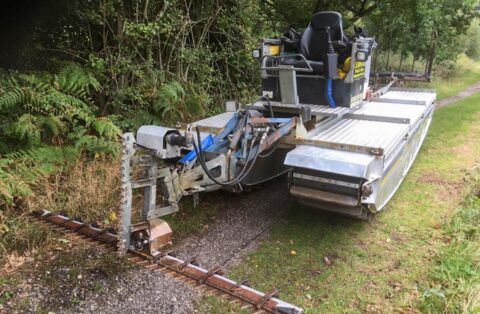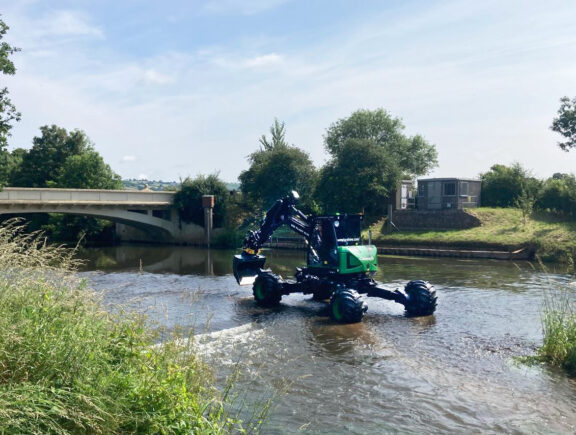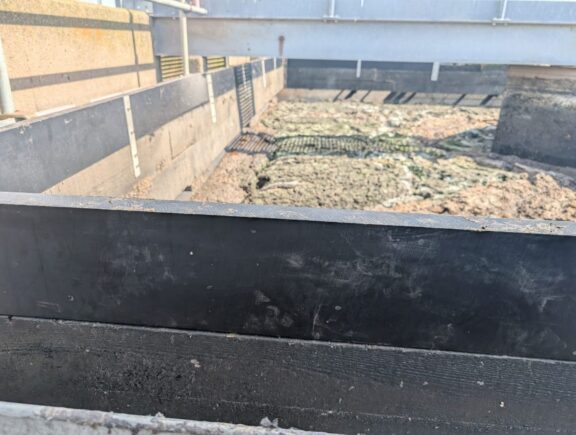There were several site constraints which mainly concerned protection of biodiversity, so equipment choice and timing was paramount to minimise the impact on aquatic and terrestrial habitats. In addition, there were overhead electricity cables that limited the size of the equipment that could be used.
The Moorgreen Stream, which flows in to and out from the pond, is a designated salmonid river, and therefore it was critical to complete works prior to spawning season, but just after bird nesting season. As this timeframe was narrow, workers were monitoring the environment for presence of wildlife.
The team decided to use a Truxor machine to cut the bulrush and floating pennywort and lift it onto the bankside. This amphibious machine works effectively where there is limited access and not enough depth to float a weed harvester-style boat.
The outlet was netted off to limit the escape of floating pennywort fragments, and sedimats and straw sausages were placed in various positions downstream to capture any suspended solids that may pass over the outlet to protect the downstream habitats.
Contaminated material was allowed to dry out on the bank before being placed in a secure compound on site where the team could monitor any future growth and treat with herbicide if required.
The client expressed their delight at the transformation, and scheduled regular maintenance, which is critical for this invasive species which can grow aggressively if it returns.
